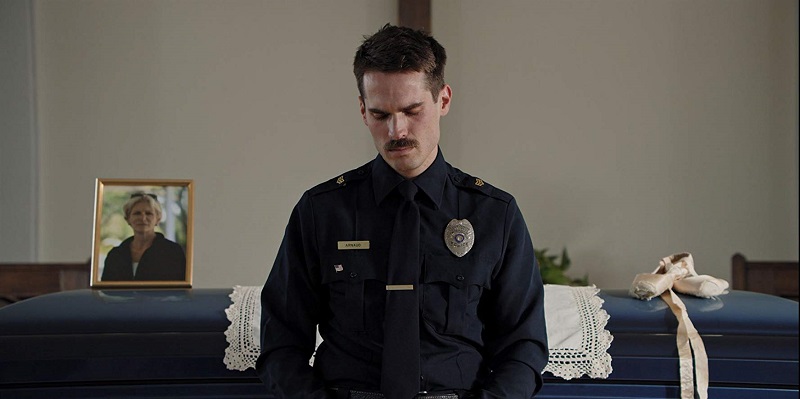Entitlement and the Food Industry in 'The Menu'
'The Menu' has a strong story. The 5 acts, which are defined by the courses, are an excellent subversion of the classic 5-act film structure.
Incluvie Foundation Gala - Learn More


Content Warning: Suicide, Drug Use
Upon a first viewing of Jim Cumming’s feature directorial debut, Thunder Road, an understanding of suicide’s role in the film may be lost. Upon a second viewing, it is clear to see that it is one of the most integral parts of the film’s plot and themes. Thunder Road presents the effects and grief that come from a family member’s suicide. Throughout the film, Officer Jim Arnaud (Cummings) becomes more impulsive, aggressive and depressed as a coping mechanism for his loss.

Thunder Road began as a proof of concept short film, which was purely the first scene of the feature. Here, Jim looses his mother to unnamed causes. Grieving and hysterical at her funeral, he goes on a rant, claiming regret for the lack of connection with his mother. This is the first clue we see hinting at Jim’s mother’s suicide. The fact that a funeral scene opens the film goes to show that there is always a reason a movie begins where it does. In Thunder Road, this opening establishes the catalyst for the rest of the story, Jim’s mother’s death.

Although suicide is never explicitly mentioned, there are many clues throughout the film which hint towards Jim’s mother taking her own life; the most blatant being near the conclusion. Here, Jim speaks to his sister about their late mother. In this scene, the two revel in memories of their mother and how they lost her. They share their feelings on how close they were to their mother. Here, Jim realizes that he had a better relationship with his mother than his sister did. This leaves him with a sense of perspective on his grieving.
In the end of the film, Jim’s ex-wife, Rosalind (Jocelyn DeBoer) is found dead in her home from an overdose. Here, Jim tells her that he will never forgive her for leaving their daughter, Crystal. At this point, the plot had gone full circle. Jim lost his mother to suicide, just as Crystal did. Jim knows the pain and grief that comes from this, so the two decide to run away together, leaving us with a bitter sweet conclusion to the film.

The long takes of the film keep you entranced in the scene. Cummings described the cinematography as a ballet, which constantly draws your eye across the screen without missing a beat. In such a personal, character driven film it is important for the audience to stay invested and devoted to the protagonist. When there are excessive cuts in a film, it can be easy to loose interest in a person or scene. In Thunder Road, the cuts are out of norm from the usual long-takes. This is meant to be jarring to the audience, in order to stay with Jim’s mentality in the scene. The most notable cuts come at the most distressing moments of Jim’s story.
Thunder Road depicts many different themes: divorce, depression, burnout, but most of all suicide. Rarely does one describe the effects of this act on a family, but in Thunder Road, we see a comedic slice-of-life that depicts one man’s struggle through loosing his mother to suicide.
Related lists created by the same author
'The Menu' has a strong story. The 5 acts, which are defined by the courses, are an excellent subversion of the classic 5-act film structure.